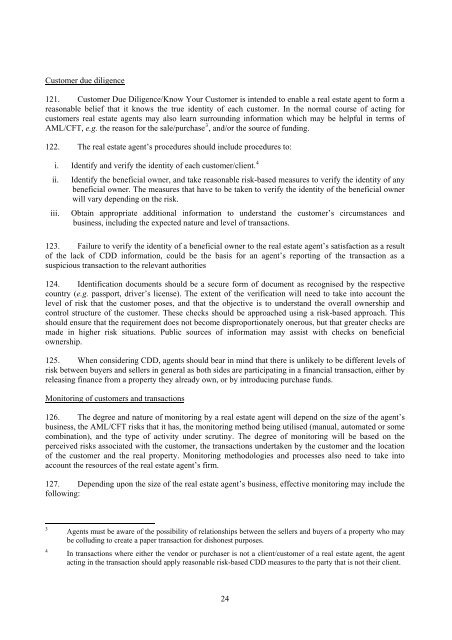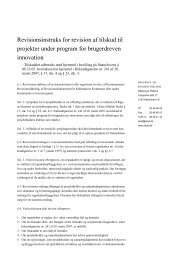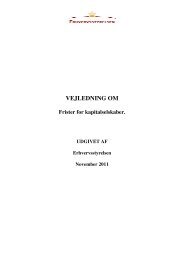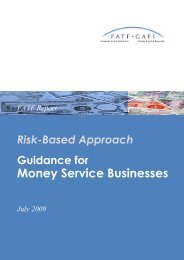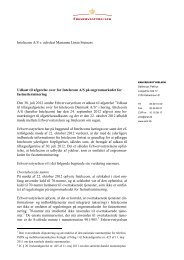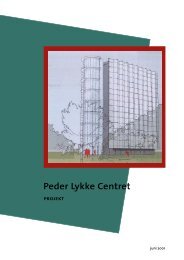RBA Guidance for Real Estate Agents.pdf - FATF
RBA Guidance for Real Estate Agents.pdf - FATF
RBA Guidance for Real Estate Agents.pdf - FATF
Create successful ePaper yourself
Turn your PDF publications into a flip-book with our unique Google optimized e-Paper software.
Customer due diligence121. Customer Due Diligence/Know Your Customer is intended to enable a real estate agent to <strong>for</strong>m areasonable belief that it knows the true identity of each customer. In the normal course of acting <strong>for</strong>customers real estate agents may also learn surrounding in<strong>for</strong>mation which may be helpful in terms ofAML/CFT, e.g. the reason <strong>for</strong> the sale/purchase 3 , and/or the source of funding.122. The real estate agent’s procedures should include procedures to:i. Identify and verify the identity of each customer/client. 4ii.iii.Identify the beneficial owner, and take reasonable risk-based measures to verify the identity of anybeneficial owner. The measures that have to be taken to verify the identity of the beneficial ownerwill vary depending on the risk.Obtain appropriate additional in<strong>for</strong>mation to understand the customer’s circumstances andbusiness, including the expected nature and level of transactions.123. Failure to verify the identity of a beneficial owner to the real estate agent’s satisfaction as a resultof the lack of CDD in<strong>for</strong>mation, could be the basis <strong>for</strong> an agent’s reporting of the transaction as asuspicious transaction to the relevant authorities124. Identification documents should be a secure <strong>for</strong>m of document as recognised by the respectivecountry (e.g. passport, driver’s license). The extent of the verification will need to take into account thelevel of risk that the customer poses, and that the objective is to understand the overall ownership andcontrol structure of the customer. These checks should be approached using a risk-based approach. Thisshould ensure that the requirement does not become disproportionately onerous, but that greater checks aremade in higher risk situations. Public sources of in<strong>for</strong>mation may assist with checks on beneficialownership.125. When considering CDD, agents should bear in mind that there is unlikely to be different levels ofrisk between buyers and sellers in general as both sides are participating in a financial transaction, either byreleasing finance from a property they already own, or by introducing purchase funds.Monitoring of customers and transactions126. The degree and nature of monitoring by a real estate agent will depend on the size of the agent’sbusiness, the AML/CFT risks that it has, the monitoring method being utilised (manual, automated or somecombination), and the type of activity under scrutiny. The degree of monitoring will be based on theperceived risks associated with the customer, the transactions undertaken by the customer and the locationof the customer and the real property. Monitoring methodologies and processes also need to take intoaccount the resources of the real estate agent’s firm.127. Depending upon the size of the real estate agent’s business, effective monitoring may include thefollowing:34<strong>Agents</strong> must be aware of the possibility of relationships between the sellers and buyers of a property who maybe colluding to create a paper transaction <strong>for</strong> dishonest purposes.In transactions where either the vendor or purchaser is not a client/customer of a real estate agent, the agentacting in the transaction should apply reasonable risk-based CDD measures to the party that is not their client.24


